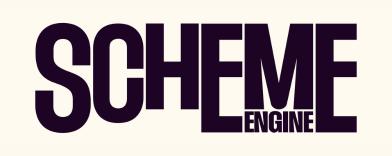
Using Tree Stumps as Ad Space for Anti-Deforestation Art

Frans Krajcberg was a Polish-Brazilian painter, sculptor and photographer known most notably for his work that used burnt wood from Brazilian sites of deforestation. Using unlikely materials such as charred roots and tree trunks, his art became a form of environmental activism, through which he denounced the destruction of the Brazilian forests.
To publicise the artist’s post-humous exhibition at MuBE, the Brazilian Museum of Sculpture and Ecology, Brazilian creative agency The Juju decided to publicise the destruction of trees in their own city and created a campaign that continues Frans Krajcberg’s legacy of combining art and ecology.
To demonstrate the power and diversity of the late artist’s work, as well as celebrate his technical and conceptual ability to interplay with nature, The Juju ensured ecological activism is the protagonist in this campaign. The interactive project placed QR codes on tree stumps that had been cut down in Sao Paolo, allowing the public to scan them to see what the tree looked like before it was cut down - via Google Street View.
To discuss how the campaign came about, honouring Frans Krajcberg’s environmentalism and racing the most advanced tech company in the world, LBB’s Ben Conway spoke with The Juju’s chief creative officer, Renato Simões.
LBB> How and when did you get involved with MuBE, The Ministry of Tourism and this exhibition? Were you fans of Frans Krajcberg already?
Renato> We'd been briefed a few months before the exhibition. I already knew Frans Krajcberg’s work and admired his impressive art and his firm position against deforestation in my country [Brazil]. It was a privilege to promote an artist who has produced such impactful work.
LBB> Where did the initial creative spark for this campaign come from?
Renato> MuBE is the Brazilian Museum of Sculpture and Ecology. Frans Krajcberg’s work is all about ecology. With that in mind, we understood that ecology should occupy a central part of the campaign. This was clear for us – we had just to find a creative way to put these elements together.
LBB> How did Frans Krajcberg’s art influence the campaign?
Renato> Krajcberg was not only a phenomenal artist, but an environmental activist. His mighty sculptures were made from trees removed from forests. We did something similar, we used tree stumps on streets as a key element of the campaign. Ecological activism has defined Frans Krajcberg's life. Keeping ecology as a protagonist of the campaign was the reasonable thing to do.

LBB> You obviously did a lot of research about deforestation - what were some of the most poignant or shocking statistics/findings you got from your research?
Renato> One of the most astonishing findings about deforestation is the data we used on the campaign: Brazil loses 32 trees per second. That is simply terrifying. The campaign brings this data to life and reminds people that this is happening not only in the rainforest, but everywhere.
LBB> Where did the ‘Tree View’ idea come from? When did you realise that recently chopped-down trees would still appear on Street View?
Renato> It basically came from observation. We see trees being pulled down every single day, on every corner in our cities. It happens all the time. We then asked ourselves, ‘Hey, is Google Street View able to update so fast?’. After some homemade research, we found the answer: no, technology is not updating as fast as reality. We felt that this truth should be told.

LBB> How did you develop this idea with the QR codes? Why were the QR codes an important and effective element of the campaign?
Renato> The QR code was the simplest and most effective way to make people interact with the idea. People scanned the code and were instantly directed to the Google Street View page. We used the QR codes both on the TVC and on the streets. The mechanism on Instagram was a bit different, you had to click on the photo to be directed to the Google Street View page. The experience was basically the same - we just used the proper tool for each platform.
We used the tree stumps/QR codes to raise awareness of Frans Krajcberg's main theme: ecology. Every single piece of the campaign portrayed a series of images of Krajcberg's work. The connection between the tree stumps and his sculptures is clear.
LBB> What was the hardest challenge you faced on this campaign - and how did you overcome it?
Renato> After selecting the tree stumps to shoot, we faced a dilemma. It was impossible to predict how long it would take for Google Street View to update those addresses. They could do it any time. We felt like we were in a race against the most advanced tech company on the planet. The prospects were not good. In the end, we shot six tree stumps for the TVC, and we let one out of the final edit (yes, they had updated that address a few days before releasing the spot).
It was incredible to produce a campaign intertwining two subjects so important (and, sometimes, so underestimated) for anyone living on this planet: art and ecology.















